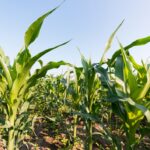Hemp, often dubbed as a wonder crop for its multifaceted applications, holds immense promise for South African farmers seeking to diversify their agricultural portfolio. Renowned for its versatility in producing both seeds rich in nutritious oils and fibers ideal for various industrial applications, hemp cultivation requires tailored techniques to optimize quality and yield. Here, we delve into strategies to unlock the full potential of hemp cultivation in South Africa.
- Selecting High-Quality Varieties: Choosing the right hemp varieties is the cornerstone of a successful cultivation venture. Varieties with high seed yield and fiber quality, such as ‘Futura 75’ and ‘Finola,’ are well-suited for South African growing conditions. Consider factors like adaptability to local climate, disease resistance, and end-use requirements when selecting varieties.
- Soil Preparation and Nutrient Management: Hemp thrives in well-drained soils with adequate fertility. Prior to planting, prepare the soil by incorporating organic matter and addressing any nutrient deficiencies identified through soil testing. Hemp has relatively low nutrient requirements but benefits from balanced fertilization to support vigorous growth and optimal yield.
- Planting Time and Spacing: Timing is crucial for maximizing hemp yield and quality. In South Africa, hemp is typically planted in spring after the last frost to ensure optimal growing conditions. Aim for a plant density of 20-40 plants per square meter for fiber production and adjust spacing accordingly for seed production to allow for ample light penetration and airflow.
- Water Management: While hemp is known for its resilience to drought, adequate soil moisture is essential, especially during germination and early growth stages. Implement efficient irrigation practices, such as drip or overhead irrigation, to ensure consistent moisture levels. Avoid overwatering, as it can lead to waterlogged soils and reduced root development.
- Weed Control: Hemp’s rapid early growth helps suppress weed competition, but proactive weed management is still necessary, particularly during the establishment phase. Employ a combination of cultural practices, such as mulching and hand weeding, along with selective herbicides to minimize weed pressure and ensure optimal hemp growth and development.
- Pest and Disease Management: Monitor hemp crops regularly for signs of pests and diseases, including aphids, spider mites, and fungal infections. Implement integrated pest management (IPM) strategies, such as crop rotation, beneficial insect release, and timely application of biopesticides, to minimize damage and protect yield potential.
- Harvesting Techniques: Harvesting hemp at the right time is crucial for maximizing seed and fiber quality. For seed production, harvest when the majority of seeds are mature and have developed a hard outer shell. Fiber hemp is typically harvested before seed maturity to ensure optimal fiber quality and strength. Utilize specialized equipment, such as combine harvesters or sickle bars, to facilitate efficient harvesting while minimizing seed and fiber damage.
- Post-Harvest Handling: Proper post-harvest handling is essential for preserving hemp quality and maximizing market value. Dry harvested hemp seeds to reduce moisture content and prevent mold formation. For fiber production, retting—either through field or water retting—is employed to separate the fibers from the stalks. Implement storage practices that maintain product integrity and prevent degradation due to moisture and pests.
- Crop Rotation and Sustainability: Incorporating hemp into a diversified crop rotation can help improve soil health, break pest cycles, and reduce reliance on chemical inputs. Rotate hemp with nitrogen-fixing legumes or cover crops to replenish soil nutrients and minimize weed pressure, contributing to a more sustainable and resilient agricultural ecosystem.
By implementing these tailored techniques and leveraging the inherent versatility of hemp, South African farmers can unlock new opportunities for economic growth, environmental stewardship, and agricultural innovation. With ongoing research, education, and collaboration, hemp cultivation has the potential to flourish, offering a sustainable solution for meeting diverse market demands and driving agricultural progress in South Africa.







